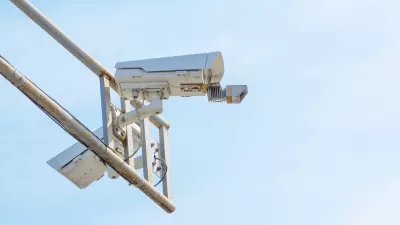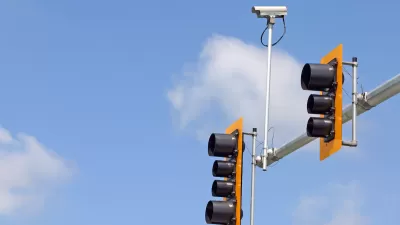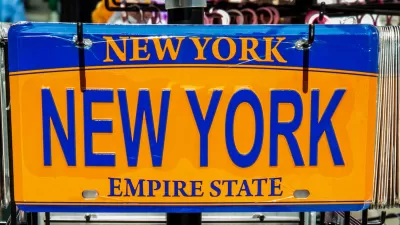More widespread deployment of automated enforcement sensors could change the system from one of high fines and sparse enforcement to one that encourages more extensive behavior change.

In an opinion piece in Greater Greater Washington, John Leibovitz calls on the District of Columbia to double down on its automated traffic enforcement program. Despite common concerns about privacy and equity, Leibovitz argues that boosting automated traffic enforcement (ATE) is “an essential tool” for reducing roadway fatalities and ensuring compliance with speed limits and other road rules.
The district already plans to triple the number of cameras it installed during a recent pilot program, but Leibovitz says many more are needed to ensure widespread compliance. With less than one percent of the district’s streets covered by ATE, this won’t have an impact on ‘global’ driving behavior. The sparse placement of cameras also brings up questions about equity, which areas get protection, and which drivers get ticketed. “It is important to note that both questions are intimately related to the first limitation–the scarcity of cameras–which inherently drives both a logic of high fines and raises hard choices about where to deploy them.”
Leibovitz advocates for a “safety zone” model of deployment that uses abundant sensors to replace a system of high fines and irregular enforcement with “a paradigm of widespread compliance with much smaller fines designed to ‘nudge’ drivers to safer behaviors on a more continuous basis.” An enhanced ATE program would also give cities more data, create a more immediate driver feedback loop, and could inform more tailored enforcement strategies.
FULL STORY: It’s time to “think different” about automated traffic enforcement

Maui's Vacation Rental Debate Turns Ugly
Verbal attacks, misinformation campaigns and fistfights plague a high-stakes debate to convert thousands of vacation rentals into long-term housing.

Planetizen Federal Action Tracker
A weekly monitor of how Trump’s orders and actions are impacting planners and planning in America.

In Urban Planning, AI Prompting Could be the New Design Thinking
Creativity has long been key to great urban design. What if we see AI as our new creative partner?

King County Supportive Housing Program Offers Hope for Unhoused Residents
The county is taking a ‘Housing First’ approach that prioritizes getting people into housing, then offering wraparound supportive services.

Researchers Use AI to Get Clearer Picture of US Housing
Analysts are using artificial intelligence to supercharge their research by allowing them to comb through data faster. Though these AI tools can be error prone, they save time and housing researchers are optimistic about the future.

Making Shared Micromobility More Inclusive
Cities and shared mobility system operators can do more to include people with disabilities in planning and operations, per a new report.
Urban Design for Planners 1: Software Tools
This six-course series explores essential urban design concepts using open source software and equips planners with the tools they need to participate fully in the urban design process.
Planning for Universal Design
Learn the tools for implementing Universal Design in planning regulations.
planning NEXT
Appalachian Highlands Housing Partners
Mpact (founded as Rail~Volution)
City of Camden Redevelopment Agency
City of Astoria
City of Portland
City of Laramie





























